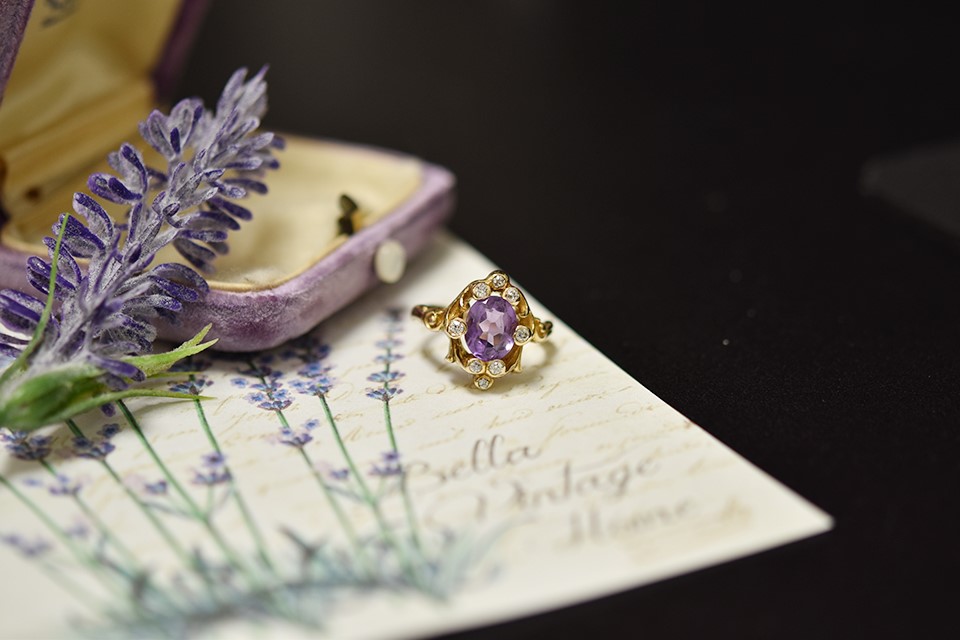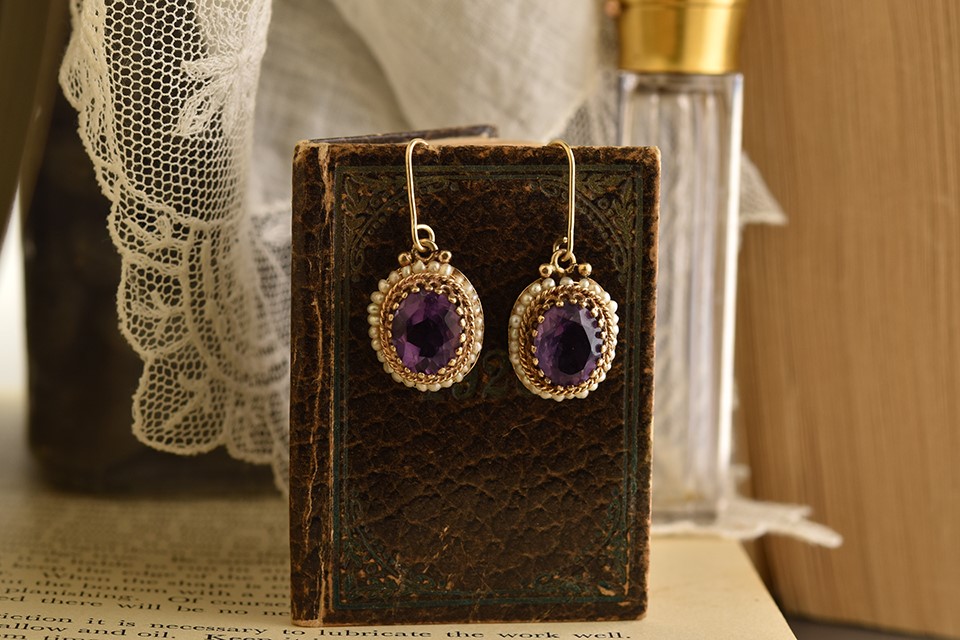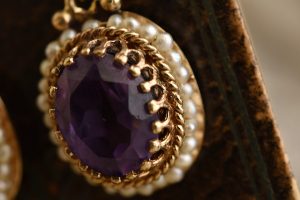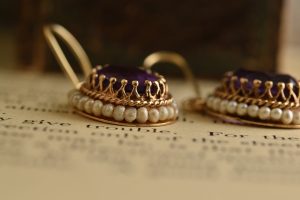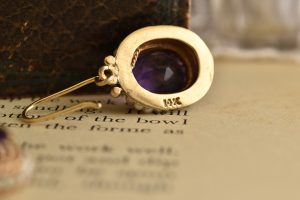Joden Girl
Baubles, Bling and the Latest Things
In the 16th century, the tradition of wearing one stone to represent your birth month began. Rooted in Biblical times, the custom originated with a breastplate worn by Aaron, the high priest of the Israelites. This plate was decorated with twelve unique gems that represented the tribes of Israel. Included among the stones were carnelian, chrysolite, beryl, jacinth, agate, amethyst, topaz, onyx, and jasper. Today, only two of these stones are still part of the modern birthstone list… topaz for November and amethyst for February.
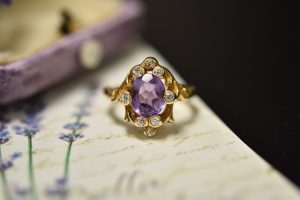
To celebrate those born in the second month of the year, we’re highlighting this unique ring. At first glance, I thought it was antique – however, upon closer inspection, I discovered that the ring is actually a revival piece. Made in the 1950’s – this ring honors the style of the late 1800’s.
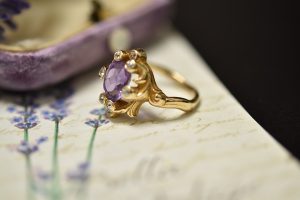
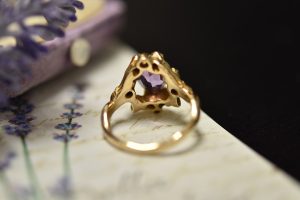
Swirls of 14-karat yellow gold create a haven for eight Old Mine Cut diamonds. Set within bezels, these stones have a combined weight of approximately .35 carat. These bezels also serve as the structure (or prongs) that hold the center stone – an oval 3.50 carat amethyst. Part of the quartz family, amethyst measures a 7.0 on the Moh’s scale. It is fairly durable, easy to wear, and affordable.
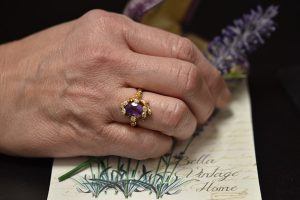
Shown on the hand, the vibrant lavender hue of the amethyst truly shines. Moderately priced at $1,275.00, this ring is available in or store and will be added to the site soon. Call or message us for financing and layaway options.
“You can go to a museum and look, or come to us and touch.”
Written by Carrie Martin
Photos by Dana Jerpe

